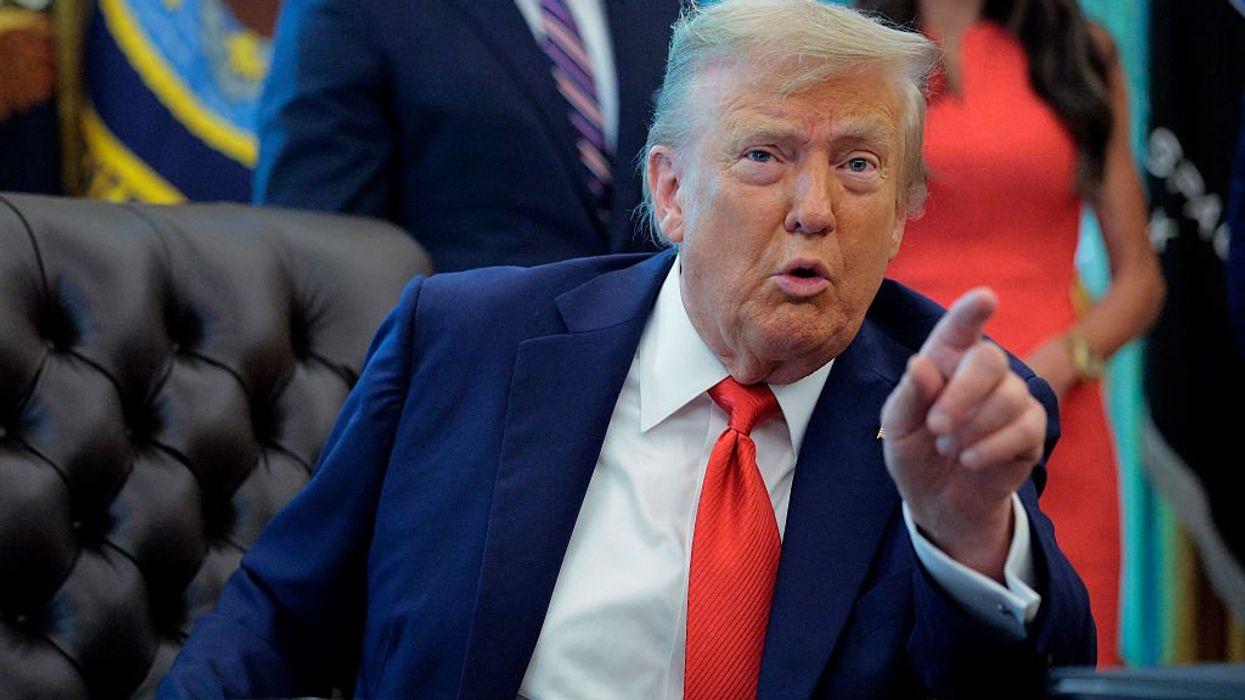“My advice to my peers, people of color, and my generation, start making these white teachers accountable for instructing you. They tooled this profession, they brag about their credentials, they brag about their tenure, so if you have so much experience then find a more productive way to teach the so called “unteachable”.”
The young lady who said this was thirteen-year-old Jada Williams, who was accepting an award from the Frederick Douglass Foundation in New York.
Jada wanted to enter an essay contest in school, and wrote about her impression of Frederick Douglass’ The Narrative of Life of Frederick Douglass, but it was never submitted. What Jada wrote apparently offended her teachers so much that she was harassed and forced to leave the school.
Jada and her mother Karla Williams joined Glenn on GBTV to discuss the incident. Glenn, who had a candid discussion about the essay this morning on radio, started the interview off by telling Ms. Williams and her daughter that he believes she was correct, if he understood what she was saying in her essay, but it was the use of the words “white teachers” as opposed to “teachers” that has changed the argument into one about race as opposed to making her original point.
Glenn asked Jada what she meant by the words “white teachers.” Jada explained that she was using the language from the book, which was published back in the 1800’s.
Jada, a student in the eighth grade, next explained that after turning her essay in, her English teacher told her that she was offended by the essay. “She [Jada’s teacher] said she felt like it mocked her. And asked me if I had any black teachers,” Jada explained.
Jada responded by telling her teacher that yes, she did have a black teacher.
According to the report Glenn read, Jada, mostly A and B+ student, had a dramatic decline in her grades following the incident. Jada’s mother commented that before the incident with the essay she never experienced academic problems with Jada.
“I would attend parent teacher conferences, and would hear ‘I wish I had twenty more students like Jada’,” Karla Williams explained.
After the incident, however, that changed. She began receiving phone calls that Jada was angry, but when Jada’s mother would question the claims she wouldn’t receive any substantial feedback. There was even talk of Jada being put in in-school suspension, but no one would provide any clear explanation as to why.
At that point Jada’s mother decided to remove her daughter from the school. She didn’t want those teachers to be instructing her daughter, because the clear message from Jada was that she wasn’t getting sufficient education, and the very claims her teachers were upset over.
Glenn, who you probably know is not a big proponent of our current nationalized public school system, broke this down to the roots of progressivism.
“Frederick Douglass new that if you don’t teach children... that is the way to make them a slave. And I think that’s what we’re doing, because this system does not work at all,” Glenn said.
Glenn worries that Jada is being used by both sides, those who want to make her a villain, and those who want to call the education system racist, but that’s not what this is about to Jada or her mother.
“I know this is absolutely not about racism, it’s about the education of our children, and that’s what needs to the focus,” Jada’s mother told Glenn, later adding “if that’s all it’s about [color] then how far will we ever get?”
Glenn asked Jada, “What have you taken away from this experience? What have you learned?”
A tearful Jada replied, “I feel misunderstood, because most grownups are making it a racial issue, when it’s a learning issue. I also feel hurt, because I’m not in school right now. They’re taking from me the one thing that I do love, and I feel confused because I thought I lived in a country of freedom of speech.”
The Frederick Douglass Foundation did still accept Jada’s essay and present her with the award. They also showed Jada and her mother David Barton’s The American History of Black and White.

 Chip Somodevilla / Staff | Getty Images
Chip Somodevilla / Staff | Getty Images
 ROBYN BECK / Contributor | Getty Images
ROBYN BECK / Contributor | Getty Images Andrew Harnik / Staff | Getty Images
Andrew Harnik / Staff | Getty Images